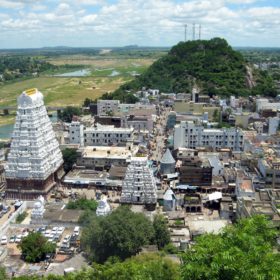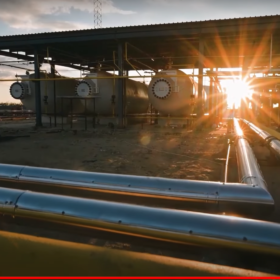Energy and Economy: Rewriting the Indian story for the World
India is running the world’s largest renewable energy expansion program with a mind-boggling target of 450 GW by 2030. Can the country with a growing energy demand do more than this? Can it do what developed countries should have done years ago?
The long read: Sink or swim
The impressive progress made by offshore wind arrays may be attracting a new group of PV developers looking to leave the constraints of the roof and free field behind. And while saltwater, wind and waves are no friend of PV, progress is being made in proving the potential applications.
The long read: Scientists at Argonne develop new kind of thermal battery
Scientists at the U.S. Department of Energy’s (DOE) Argonne National Laboratory have developed a new kind of thermal battery that can greatly increase the energy efficiency and cost-effectiveness of many industrial processes and shows great promise for use in the solar industry. Liz Thompson reports that Argonne’s Thermal Energy Storage System (TESS) can rapidly capture and store surplus heat so that it can be used as needed. With its pioneering modular design and material advancements resulting in greater efficiency, TESS is a big step forward in thermal battery technology.
Tata Power to develop 100 MW solar project in Maharashtra
The Maharashtra project is the developer’s second large-scale solar win this month following a 120 MW project in Gujarat. The electricity generated will be supplied to Maharashtra State Electricity Distribution Co. Ltd (MSEDCL) under a 25-year power purchase agreement.
India can become electric vehicle manufacturing hub within five years: Nitin Gadkari
The industry needs to cut a dependence on electric vehicle battery imports from China, according to the road transport minister, who said the government is looking to support research into alternatives to lithium-ion technology.
Andhra Pradesh allocates 57% of energy budget to ‘free power for agriculture’ scheme
The overall energy outlay of Rs 6984.73 crore for the year 2020-21 is much lower than 2019-20’s revised estimate of Rs 11,639 crore.
Supply chain concerns will drive EV battery recycling policies
With electric vehicles starting to gain traction, the International Energy Agency’s updated, ten-year e-mobility forecast has suggested geopolitical and economic concerns will trump environmental niceties when it comes to encouraging recycling. But what price ever-cheaper batteries?
Uttar Pradesh set for 2 GW ‘ultra-mega’ renewable energy park
The state cabinet has approved a 74:26 joint venture proposal by publicly-owned hydropower company THDC India and the Uttar Pradesh New and Renewable Energy Development Agency for the ambitious project.
Transmission charges waiver to renewables may be extended beyond 2022
Solar and wind projects commissioned beyond the year 2022—at least till mid of 2023—may be eligible for interstate transmission charges waiver on the electricity generated.
Mobile solar pumping system offers pay-as-you-go solution for farmers
Researchers have simulated a cart-mounted solar pump which they say would mean farmers in off-grid areas would be able to irrigate fields by paying only for the solar electricity used.















